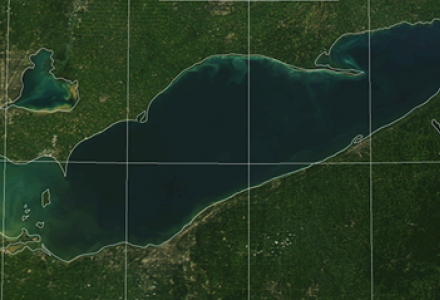
“Just because Lake Superior is big doesn’t mean it can’t change ... in fact, it’s one of the fastest-changing lakes in the world,” according to Dr. Jay Austin, a professor at the University of Minnesota-Duluth Large Lakes Observatory.
In its 2020 Second Triennial Assessment of Progress Report on Great Lakes water quality (2020 TAP report), the IJC notes that climate change impacts on Lake Superior should be viewed as the proverbial canary in the coal mine.
Austin explained the drivers and impacts of climate change on Lake Superior in his keynote presentation at a Thunder Bay, Ontario, symposium that was part of the IJC’s 2019 efforts to obtain input to prepare the 2020 TAP report.
Relative to all the lakes, Lake Superior is experiencing some of the fastest observed summer lake water temperature warming. And Superior has seen the highest decrease in its duration of winter ice cover.
The Superior basin has a lesser extent of stressors and population than the other lakes, which offers scientists “the opportunity to study the impact of climate change on a lake where it’s decoupled from other stressors,” Austin said.
US National Park Service Aquatic Ecologist Dr. Brenda Lafrancois explained further during the IJC’s Water Quality Issues Briefing meeting in 2019 at Northland College in Ashland, Wisconsin.
Lake Superior is among the world’s most rapidly warming lakes and climate projections are for a warmer future, “so we can expect to see warmer (summer water) temperatures that potentially support more (blue-green algal) blooms, and we also know that climate projections are for a warmer, stormier future,” Lafrancois said.
While Lake Superior is least hospitable of all the lakes to blue-green algal blooms, blooms appeared in the western arm of Lake Superior in 2012 and again in 2016, 2017 and 2018.
Climate change impacts the patterns of temperature and precipitation, two major factors that contribute to the presence of blue-green algal blooms on Lake Superior.
During the Northland College issue briefing, Burke Center for Freshwater Innovation Associate Director Matt Hudson described how large loads of sediment and nutrients flow into western regions of Lake Superior following intense precipitation events.
Parts of the same western region of Lake Superior have seen observed increases in precipitation intensity around 35-40 percent since the mid-1900s, according to Hudson.
According to Lafrancois, lab experiments show that these warmer stormier conditions “are likely to be more favorable for blooms.”
In its 2020 TAP report, the IJC recommends that the Canadian and US governments lead a collaborative and coordinated effort to eliminate blue-green (cyanobacterial) algal blooms from Lake Superior.
The IJC’s recommendation that the Canadian and US governments lead the elimination of algal blooms on Lake Superior includes four core components:
- Support observations, experiments and models to describe nutrient loads and bloom dynamics
- Set nutrient load targets that reduce point and nonpoint source pollution
- Invest in pollution controls and best management practices to achieve load reductions
- Incorporate findings and nutrient load reduction targets into the Superior Lakewide Action and Management Plan 2025 update.
In the 2020 TAP report, the IJC notes that the high resource value of Lake Superior offers “perhaps the best opportunity to showcase a government-led response to adapt to the impacts of changing climate on our shared Great Lakes.”
Videos and all presentations from the IJC’s 2019 engagement meetings are compiled in this interactive Story Map.

Allison Voglesong Zejnati is public affairs specialist at the IJC’s Great Lakes Regional Office in Windsor, Ontario.



